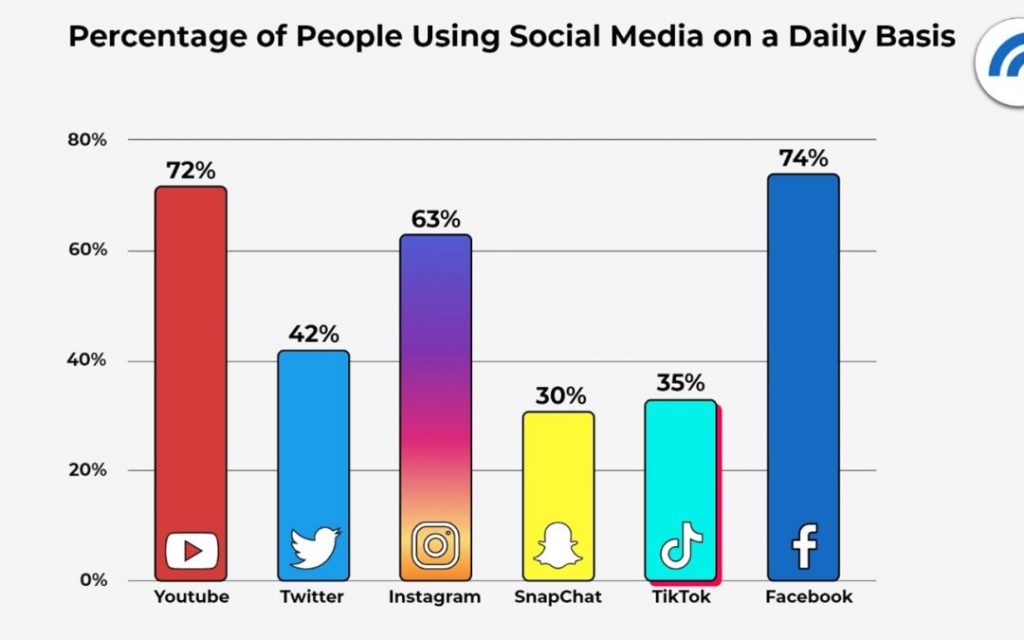
The role of social media in the formation of a teenager’s identity is far more significant than initially assumed. It is not only the group identity that is developed, but also the individual identity, which is the one that distinguishes a person from others and allows them to demonstrate their uniqueness. Social media is not only a platform for meeting and exchanging information with others, but also for comparing and contrasting with others. Without comparison, teenagers may not be able to differentiate between themselves and their peers. Furthermore, the extent to which a teen is accepted, integrated and successful in personal relationships within a group is determined by their social media presence.
Like other social media sites, Instagram has the power to mould our identities in a variety of ways. It has grown to be an important aspect of many people’s life, impacting both their own and other people’s perceptions of them. Instagram users are encouraged to curate and share a well-curated version of themselves with the world through the platform. In an attempt to present an idealised version of themselves, people frequently share their best pictures, emphasise their accomplishments, and promote their hobbies.

Influencer culture: Through Instagram, a new phenomena known as “influencers” has emerged, influencing the goals and identities of those who follow them. Many people strive to live up to the lives of influencers they look up to, which causes them to shift their ideals and aspirations in an effort to fit in with the influencer culture. For example Charlie D’amelio. Charlie D’Amelio is a prominent figure in the social media world, particularly on TikTok and Instagram.

1. Charlie quickly became well-known on TikTok due to her dance videos, gaining a sizable fan base at an early age. Her identity was shaped by her abrupt exposure to the public as she dealt with the difficulties of notoriety, acclaim, and scrutiny from the public.
2.The core of Charlie’s online character is her dual identities as a dancer and content creator. Her capacity to captivate and amuse large crowds has grown to be an important aspect of who she is.
3.Charlie has worked on her own growth despite her early notoriety, sharing her experience with self-acceptance and mental health. Her identity as an approachable and candid person has been shaped by her vulnerabilities and growth.
4.Charlie has gained a lot of traction among young people and her influence extends beyond the content she creates. Her reputation as an influencer and role model has been shaped in part by her ability to sway her audience.
Charlie’s sense of self and boundaries have been impacted by the difficulties she has faced in striking a balance between her personal and professional lives.
Her tiktok account: https://www.tiktok.com/@charlidamelio?is_from_webapp=1&sender_device=pc
instagram : https://www.instagram.com/charlidamelio/
REFERENCES:
- Charli And Dixie D’Amelio Turned TikTok Fame Into A Billionaire-Backed Personal Brand That Hinges On Their Personal Lives: https://www.forbes.com/sites/alexandrasternlicht/2022/09/06/charli-and-dixie-damelio-turned-tiktok-fame-into-a-billionaire-backed-personal-brand-that-hinges-on-their-personal-lives/
2. Inside the life of 17-year-old Charli D’Amelio, the most popular TikTok star in the world who now has her own TV show and clothing line : https://www.insider.com/charli-d-amelio-bio-how-old-tiktok-famous-renegade-super-bowl-2020
3. Identity Construction on Instagram by Ozan Can Yılmaz: Identity Construction on Instagram:
4. How Social Media Shapes Identity | Ulrike Schultze | TEDxSMU : https://www.youtube.com/watch?v=CSpyZor-Byk


I completely agree with the statement in the opening paragraph stating that teenagers of today focus a lot on social presence and followers, and Charli d’Amelio was a perfect example to use to further extend this point due to her rapid growth in popularity on TikTok. However, is there any way you could link this to Goffman’s theory, and show how social media forces her to put on a persona online that may be completely different from who she is off-stage?